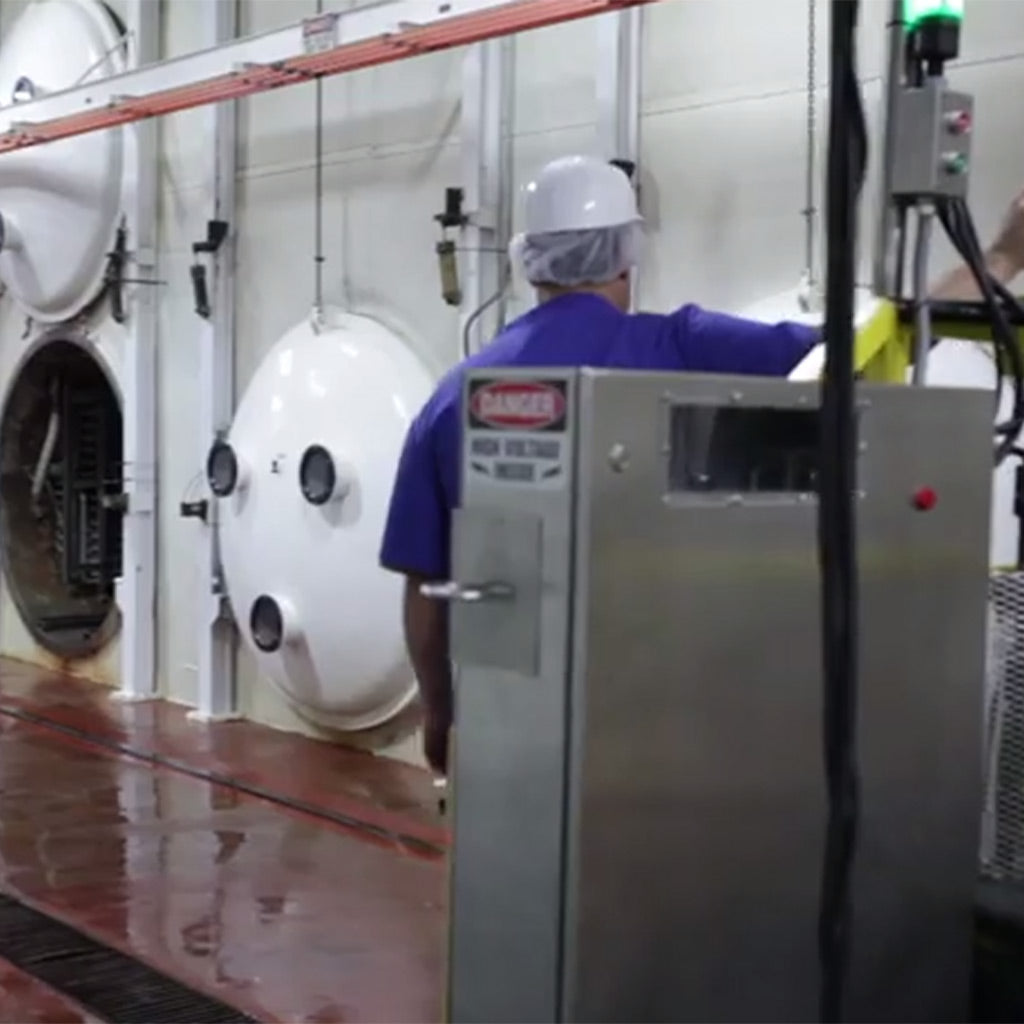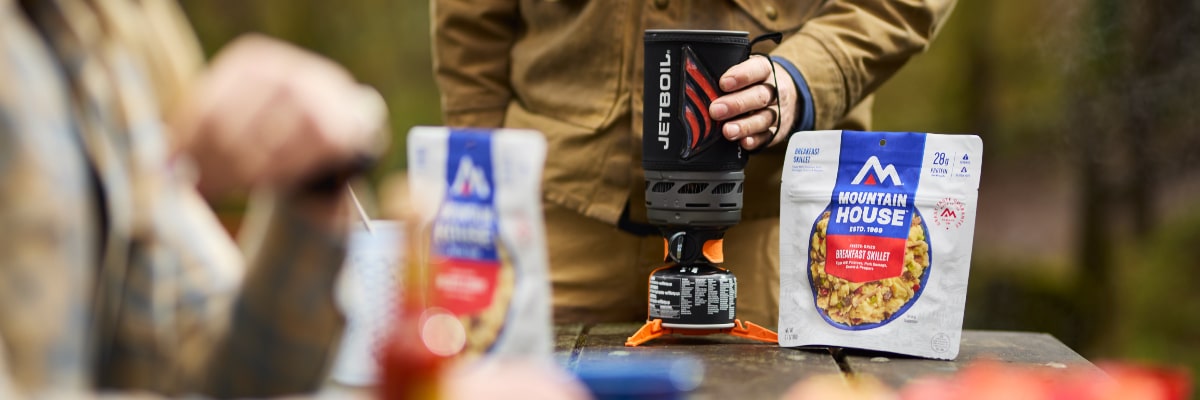Inspired for an Adventure? Check out Beef Stroganoff - Pouch and Beef Stew - Pouch
Free Ground Shipping On All Orders
Over 2,100 Reviews
Add description, images, menus and links to your mega menu
A column with no settings can be used as a spacer
Link to your collections, sales and even external links
Add up to five columns
Add description, images, menus and links to your mega menu
A column with no settings can be used as a spacer
Link to your collections, sales and even external links
Add up to five columns


Freeze-dried food has grown in popularity not only amongst the preparedness and adventure crowds, but in many other areas including the “I need to find something quick and tasty for dinner” crowd. Freeze-dried food products have the ability to taste better, last longer, and are lighter than food preserved by other means. However, many people don't know what freeze drying means or how it actually works. For the sake of this article, we will focus on the process as it relates to food.
Freeze drying food, or lyophilization, is the process of removing water from the food. It’s a unique process that starts by freezing the food and then placing it under vacuum pressure to allow the frozen water in the product to sublimate directly from ice to vapor, bypassing the liquid phase. This method involves applying heat to facilitate sublimation and using low-temperature condenser plates to capture the vaporized water. The process preserves the food's structure, nutrition, and flavor. Once freeze-dried, most foods can be rehydrated to their original state by simply adding water. This technique extends the shelf life of food while maintaining its quality, freshness, and nutritional value.
How the Freeze Drying Process Works - Step by Step
When you take a closer look at this food preservation method, the principles of freeze drying are actually pretty simple. Here’s how the process works at Mountain House:
1. Cook and Freeze the Food
First and foremost, we start by using high-quality ingredients to cook our recipes. After cooking our food in our large cook pots, we put it on special trays and place them in a giant freezer. We need the food to freeze solid before moving on to the next step.
2. Place the Frozen Food in a Vacuum Chamber
Once the food is frozen solid, we place the cart full of trays into a large vacuum drying chamber. We create a vacuum in the chamber until the air pressure within is roughly equivalent to the air pressure 46 miles above the surface of the Earth.
3. Add Heat to the Vacuum Chamber
Next, a little heat is added to the bottom of the trays to encourage the ice to leave the food. The low air pressure combined with the added heat causes the solid ice to turn straight into water vapor without actually melting. This part of the process is called sublimation. Because the ice goes straight to a gas without becoming a liquid, it leaves the structure and natural pores in the food intact.
4. Capture the Water Vapor
All of the water contents have to go somewhere. Our system captures the water vapor, which keeps it from flowing back into the food. Once we've removed 98% of the water, we’re done. Our process leaves the nutrients and natural enzymes intact in the food. The freeze drying time differs depending on the specific food being dried, but it can take up to 24 hours.
5. Package the Food
We then take the freeze-dried product and package it using our proprietary packaging methods. This entire process is what allows us to claim a 30-year shelf life guarantee on our pouches and #10 cans. To prepare the food, simply rehydrate it by adding water and following these steps.

Freeze Drying vs Other Drying Methods
Technically, freeze drying is a form of dehydration. However, the process of regular dehydration is different and just involves the application of heat to remove the moisture content. Freeze-dried food has the ability to better maintain the texture, flavor, and nutrition of the food when compared to dehydrated food.
Another benefit of freeze-dried food is its rehydration abilities. For example, if you use conventional air dehydration methods on a grape, it becomes a chewy raisin. This is because those pores in the food have collapsed and moisture can’t flow back in. Air dehydration causes nutrition loss as well as a change in flavor and texture. Freeze drying maintains those pores, which allows proper rehydration, preserves nutrients, keeps the flavor, and keeps the texture intact.
If you’d rather see a visual of how Mountain House freeze drying techniques work, check out this video that shows a behind-the-scenes look.
What Is Freeze-Drying? from Mountain House on YouTube.

MRE vs Freeze-Dried Food

What Ingredients Are in Mountain House Freeze-Dried Meals?


Stay Hungry for Adventure
Sign Up for Delicious Outdoor Meals & Exclusive Offers!
By clicking ‘Join Now’, I agree to the Terms of Service and Privacy Policy.


Join the adventure
©2026 Mountain House — All Rights Reserved.
Your Cart is Empty
Continue ShoppingYour Cart
Subtotal
$0.00
EXPRESS PAYMENT METHODS AVAILABLE IN CHECKOUT
Taxes and Shipping Calculated at Checkout
Your ExpertVoice deal.
$[Deal Price]
$[Original Price]
Discount applied at checkout.
On sale now — lower than your ExpertVoice discount.
Not eligible for ExpertVoice discount.














